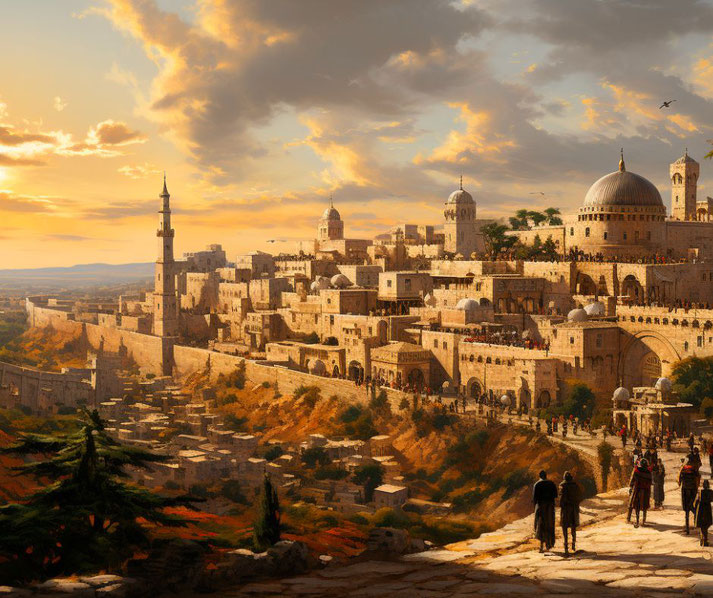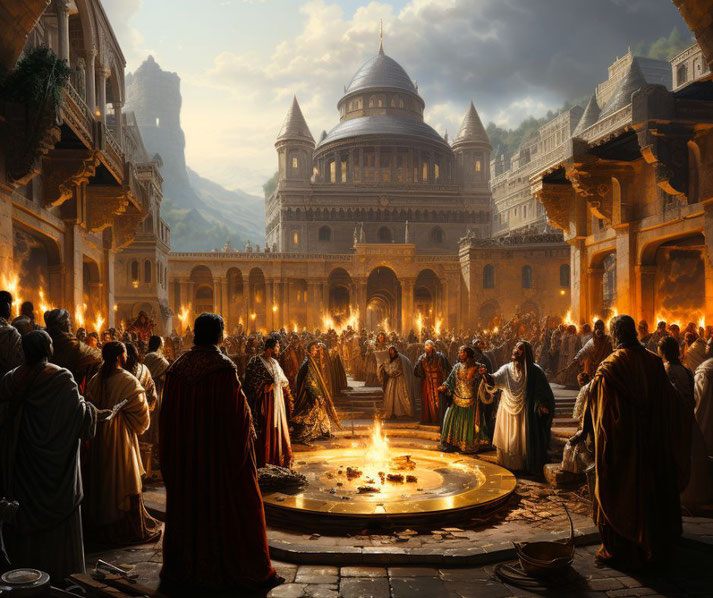How the Crusaders captured Jerusalem 1099 and the horror that unfolded afterwards

At dawn on July 15, 1099, the walls of Jerusalem bristled with the banners of the Crusaders, a sight that signaled both an end and a beginning in the complex history of this ancient city.
This moment marked the culmination of the First Crusade, but what happened next still confuses and angers modern observers.
What had driven thousands of Europeans to embark on this perilous crusade?
What happened to the city's defenders when the Crusaders finally breached their walls?
And what were the lasting repercussions of this seismic event for both the Christian and Muslim worlds?
What were Europeans doing in the Middle East in 1099?
The First Crusade, initiated by Pope Urban II's call in 1095 at the Council of Clermont, set in motion a massive movement of knights and peasants towards the Holy Land.
Driven by a combination of religious fervor, the promise of indulgences, and the lure of land and wealth, thousands embarked on this arduous journey.
By August 1096, various groups of Crusaders had begun their trek across Europe, converging on Constantinople, the capital of the Byzantine Empire.
The Byzantine Emperor Alexios I Komnenos, initially seeking assistance against Turkish threats, found himself hosting an unruly and massive force.
In 1097, the Crusaders laid siege to Nicaea, a city then under Seljuk Turkish control, capturing it in June.
This victory was followed by a grueling march through Anatolia, where they faced not only the enemy but also the harsh realities of hunger and disease.
The Battle of Dorylaeum on July 1, 1097, was a crucial victory for the Crusaders, boosting their morale and weakening Turkish resistance in the region.
By October 1097, the Crusaders reached and besieged Antioch, a siege that lasted until June 1098 and was marked by fierce combat and desperate conditions.
The capture of Antioch was a turning point, significantly bolstering the Crusaders' position.
However, internal disputes and the struggle for power among the Crusader leaders marked this period, highlighting the complex interplay of religious motives and political ambitions.
The journey from Antioch to Jerusalem was delayed due to these disputes and the need to consolidate their hold on the newly captured territory.
It wasn't until January 1099 that the Crusaders, now a battle-hardened and more strategically aware force, resumed their march towards Jerusalem.

The 1099 siege of Jerusalem
The Siege of Jerusalem began on June 7, 1099. The city, fortified and prepared for the impending siege, was under the control of the Fatimid Caliphate.
The Crusaders, despite being battle-weary and reduced in numbers from their original force, were driven by a potent mix of religious zeal and the lure of conquest.
However, the Fatimids did not seem to have realised the threat the Europeans posed to the city, as the defending garrison was relatively small and not well equipped.
Initially, the Crusaders faced significant challenges. Their numbers were diminished, and they lacked vital siege equipment.
The arid environment and scarcity of water around Jerusalem added to their difficulties.
However, their determination was unshaken. By June 17, they had commenced building siege towers and other necessary equipment, using wood from dismantled ships and materials sourced from the surrounding countryside.
The siege intensified as the Crusaders completed their preparations. On July 15, after nearly five weeks of siege, they launched a full-scale assault.
The Crusaders, divided into two main contingents, attacked different sections of the city's walls.
One group, led by Godfrey of Bouillon, targeted the northern wall, while another, under Raymond IV of Toulouse, assaulted the southern wall.
The battle was fierce, with both sides experiencing heavy casualties. The turning point came when Godfrey's men managed to breach the walls and enter the city on the morning of July 15.
The massacre that followed the city's capture
Once inside the city, the Crusaders, fueled by the pent-up frustrations of a long and arduous campaign, carried out a widespread massacre.
Contemporary accounts, both Christian and Muslim, provide harrowing descriptions of the violence that ensued.
The Crusaders, seemingly driven by a belief that their victory was a divine mandate, showed little mercy to the city's Muslim and Jewish populations.
Men, women, and children were killed indiscriminately, with many seeking refuge in their places of worship – the Al-Aqsa Mosque and the Western Wall – only to be pursued and slain there.
The streets of Jerusalem, a city revered as holy by Christians, Jews, and Muslims alike, were said to have run with blood.
The scale and ferocity of the massacre left a lasting impression on both the Islamic world and later European observers.
For Muslims, the fall of Jerusalem and the subsequent massacre were a profound shock and a rallying point for future resistance against the Crusaders.
This event significantly influenced the Muslim perception of the Crusades, often being cited in later narratives as a symbol of Christian aggression and betrayal.
For Jews, the massacre was another tragic event in a long history of persecution.
The Jewish community in Jerusalem, which had coexisted with their Muslim neighbors, faced a brutal end, further contributing to the Jewish diaspora and reinforcing narratives of suffering and displacement.
In the context of Christian Europe, the reports of the massacre were met with a mix of celebration and horror.
While some viewed the capture of Jerusalem as a miraculous victory, others were disturbed by the reports of indiscriminate killing, even in a time when such brutality was not uncommon in warfare.
The accounts of the massacre challenged the idealized notion of the Crusades as purely holy wars and raised moral questions about the conduct of the Crusaders.
What did the Crusaders do with Jerusalem?
The Crusaders, having achieved their primary objective, moved quickly to consolidate their hold on Jerusalem.
Godfrey of Bouillon was declared the ruler of Jerusalem, although he refused the title of king, opting instead for the title of "Advocate of the Holy Sepulchre".
This decision reflected the ostensibly religious motivation behind the Crusade.
This Crusader state, along with others established in the Levant, represented a significant shift in the balance of power and set the stage for ongoing conflicts between Christian and Muslim forces in the region.

For the Islamic world, the fall of Jerusalem was a shock that prompted a reevaluation of both military and political strategies.
It eventually led to the rise of formidable leaders like Saladin, who would play a crucial role in the later stages of the Crusades.
The loss of Jerusalem acted as a catalyst for the unification of Muslim forces against the Crusader states, culminating in the recapture of Jerusalem by Saladin in 1187, a mere 88 years after its conquest by the Crusaders.
In Europe, the success of the First Crusade and the capture of Jerusalem were met with jubilation and were used to bolster support for future Crusades.
The events of 1099 were portrayed as a divine victory, strengthening the influence of the Church and the papacy.
However, the long-term impact of the Crusades on Europe was mixed. While they contributed to the expansion of trade and the transfer of knowledge between East and West, they also led to increased militarization and a legacy of religious intolerance.
What do you need help with?
Download ready-to-use digital learning resources
Copyright © History Skills 2014-2025.
Contact via email
With the exception of links to external sites, some historical sources and extracts from specific publications, all content on this website is copyrighted by History Skills. This content may not be copied, republished or redistributed without written permission from the website creator. Please use the Contact page to obtain relevant permission.





